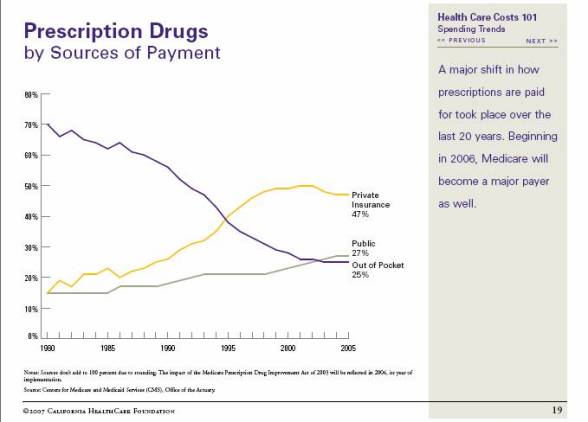I always like to try to think out-of-the-box and have tried to see a future where tools like Second Life will affect healthcare. (I haven’t played Second Life which is a virtual reality world being used for all types of things. Look into some of the articles or blogs about what IBM is doing with it.)
I was reading a blog entry yesterday on DigitOwl about some future technologies called semacodes, MyVu, and d’fusion (see below) and then saw a new entry this morning in the eHealth blog when an idea started to form.
Put simply, Semacodes are machine-readable codes that contain URLs. Think “cooler barcode” and you’re on the right track. Almost all advertising will carry Semacodes, enabling consumers to photograph them to connect to information instantly via a mobile device.
The second piece of technology Tom highlights in his blog is MyVu; “funky Robocop-style sunnies” that are already available at apple.com. MyVu glasses plug into your video iPod to create a virtual big-screen within the “real space” in front of you.
The third piece of Tom’s technology pie is something called d’fusion (no, it’s not a fancy French hair product). D’fusion is a software that will allow you to create “augmented reality”. Put simply, a merging of real time, 3D objects/characters with live video.
In the future, could we simply pause when we felt sick, put on our MyVu glasses to create a virtual big-screen wherever we are, use d’fusion technology to enter a Second Life type of environment, and see a whole series of MDs, specialists and others in real-time. They could be anywhere in the world. They could give you an Information Prescription and/or a real prescription (digital of course) with a series of semacodes on it that could be used to take you to other virtual environments or content locations. You could then stop on your way home at a kiosk to pick up any physical drugs or products you needed.
Of course this only works with the advent of Smart Devices that could be used to take all the physical measurements that a clinic, nurse or MD would take, but that seems very feasible. A device injected inside you which constantly monitors blood pressure, temperature, and tests your blood could address this and push your data to a PHR or other data source that the virtual physician could tap into.
Great. No waiting. Instant gratification. No travel. Access to the best care in the world. Links to lots of information. Seems logical to me. Already, people are trying telemedicine and telepharmacy.

 August 30, 2007
August 30, 2007 


















